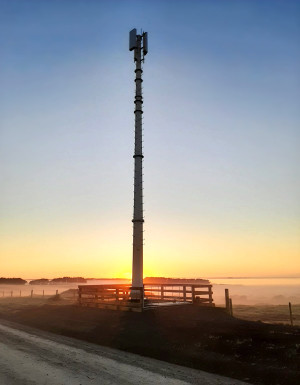Case study: Improved connectivity on the Chatham Islands
In December 2021, mobile and broadband services were switched on for the 663 residents of Rēkohu / Wharekauri / Chatham Islands, around 800km from mainland Aotearoa New Zealand. The Government contributed $11.5 million to the project.
On this page
 “We are so excited to have the new network switched on with fast broadband and mobile services available for residents and visitors to Chatham Islands. Being able to keep track of our tourist operations and keeping people safe as they travel the island is a huge advantage, saving time, resource, improving efficiency and ultimately enhancing the visitor experience. Our whole health and safety approach on
“We are so excited to have the new network switched on with fast broadband and mobile services available for residents and visitors to Chatham Islands. Being able to keep track of our tourist operations and keeping people safe as they travel the island is a huge advantage, saving time, resource, improving efficiency and ultimately enhancing the visitor experience. Our whole health and safety approach on
the island is now enhanced because of the new network, and now 111 Emergency calls can be made from mobiles, as well as landlines, which will improve our response times for incidents,” says Mayor Monique Croon.
The Chatham Islands boast the title of being home to New Zealand’s second-largest fishing fleet. For workers who are at sea for days at a time, broadband and mobile coverage enable them to keep in touch with their families and the mainland.
In addition to this, all three schools based in the Chatham Islands now have improved connectivity thanks to Network for Learning and the 4G network. The improved connectivity gives students and teachers in Kaingaroa School, Pitt Island School and Te One School access to a more reliable internet connection and increased internet speeds.
The new 4G network is enabled by five new cell towers around the main island and is supported by a new satellite link and satellite dish providing 8.5 times the capacity of the previous satellite link serving the island. The improved coverage for businesses, schools, marae, the airport and
households has helped to strengthen the local economy and support the way of life in this remote part of New Zealand.
The new network also enables 111 Emergency calling to be available on the island for the first time. Users of the mobile networks are now able to contact emergency services from their mobiles, providing a crucial service for the community.

